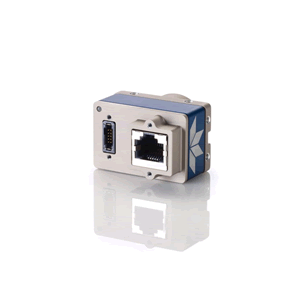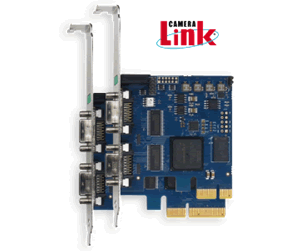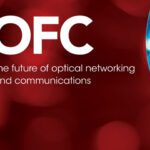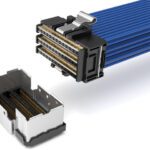No Silver Bullet for Vision System Connectors
Like any aspect of machine vision, cable and connector selection is driven by speed and economy. Customers demand longer, faster, and cheaper cabling solutions, but aren’t always happy about adopting yet another new connector or protocol.
No Silver Bullet for Vision System Connectors
 The stringent demands of vision systems vary depending on distance, cost, and other factors, and can be met by a range of cables and connectors.
The stringent demands of vision systems vary depending on distance, cost, and other factors, and can be met by a range of cables and connectors.
Cabling often receives the least amount of attention when a vision system is being designed, but — like the thorn in the lion’s paw — can be the (seemingly) tiny thing that brings the beast down. A suitable data cable could mean the difference between flawless widget inspection and a damaged product in the hands of end-users. Recent updates to communication standards, along with cables and connectors themselves, demonstrate the advantages and limitations of selecting the appropriate vision system solutions.
Go Rugged or Go Home
Components Express, Inc. reports that camera makers are advocating for more industrialized connectors for GigE cameras. “In the next few years, we expect the RJ45 connector will begin to disappear and the M12 X-code will be adapted in its place,” said Steve Mott, vice president of Components Express. “The M12 X-code isn’t subject to any kind of vibration issues. It has screw-down locking and offers IP67 waterproof protection, versus the RJ45 which, even with screws, isn’t suitable for use in harsh environments.”
Mott also notes that the M12 has much more standardized mating and connector lengths, making it a plug-and-play option. What’s more, unlike the RJ45, the M12 X-code can be adapted to 10GigE standards.
However, that’s not to say that RJ45 will vanish altogether. “If you look at lower-cost GigE cameras, like Teledyne DALSA’s Genie Nano or Basler Ace, they’re using economical small-form-factor I/O connectors and staying with the RJ45,” says Ray Berst, president of Components Express. “You don’t want a €100 I/O cable for a camera that costs €300. Connector selection really depends on the market segment the camera is built for.”

Figure 1: Inexpensive connectors are key for Teledyne Dalsa’s Genie Dalsa
On the USB-3 front, cable length represents the biggest challenge, as the USB 3.1 standard was written for cables with maximum lengths of one meter. As a result, the cable companies within USB3 Vision™ are working to agree on an electrical standard that would allow cables five to 10 meters in length. One solution is to use active copper cables. “But here again, we get into cable assemblies that are approaching the cost of the camera itself,” said Berst.
Going the Distance
Another protocol that suffers from distance limitations is Camera Link®, which has a maximum cable length of 10 meters. Though cost prohibitive for some applications, one option for overcoming length restrictions is to convert Camera Link electrical cables to fiber optic transmission.
Engineering Design Team (EDT), Inc. makes Camera Link extenders that provide long-range capability up to 100 km from the host computer, depending on the cabling and transceivers.
In addition to length, converting Camera Link to fiber optics offers the benefit of electrical isolation. “They are often used in observatories where there’s a camera on a telescope,” said Cliff Hayes, field application engineer for EDT. “If lightning hits the telescope, it’s not going to come down the wire and damage the computer since there’s no electrical path between the telescope and computer.”
Electrical cables also can be heavy and cumbersome. Hayes continued, “A fiber-optic cable is much lighter and offers extra flexibility for certain applications, such as in aircraft when they’re trying to cut back on size, weight, and power.”
VisionLink XF, EDT’s newest product, winnows down the cabling package even further. “A lot of Camera Link cameras have two SDR26 or MDR26 connectors at the camera end and frame grabber end, and for years we have been providing this four-converter system with our existing VisionLink RCX module,” said Randall Henderson, senior software engineer with EDT. “VisionLink XF puts all of that into one box and goes over a higher-rate fiber optic with one duplex or even simplex fiber optic cable instead of two pairs.”

Figure 2: EDT’s frame grabbers often employ Camera Link connectors.
The result is a setup that Hayes said is “much smaller, much lighter, and can go much farther.”
According to Hayes, EDT’s VisionLink extenders have been purchased for a wide swath of research, military, and commercial applications. Among them are LCD flat panel inspection, military target tracking, deep ocean videography, and optical measuring and laser marking.
The converters also are used in a few niche, but notable scientific applications. At the SLAC National Accelerator Laboratory in California, VisionLink RCX fiber extenders ensure that the laser beam is focused and at the correct power at particular points along the accelerator. Meanwhile, the Laser Interferometer Gravitational-Wave Observatory (LIGO), also in California, employs EDT’s extenders as part of its optical thermal compensation system.
Hayes also sees new market opportunities with manufacturers who are expanding their operations. “As they get larger and larger, companies might want to move their machine vision and computer systems off the floor to more of a lab environment,” said Hayes, “and extending Camera Link over fiber is going to be an important part of that equation.”
Camera Link Sticks, CoaXPress Evolves
By many accounts, Camera Link is sticking around for the count. EDT’s Hayes said that the lower-bandwidth modes of Camera Link “have been overtaken by GigE cameras, cables, and network interface cards, and it’s similar for USB3 as well. But the higher-speed, higher-bandwidth applications still seem to be pretty commonly served by Camera Link products.”
Even then, Camera Link has competition as Camera Link HS® and CoaXPress® (CXP) look to go faster and farther. “Quite frankly, we expected CoaXPress to take over a major portion of market share, but Camera Link is still going strong,” said Berst of Components Express. “People like that Camera Link is a real-time system. Plus, they are comfortable with the software interface. When system integrators build a system, they go with what they know.”
Although CoaXPress adoption rates may not be as high as expected at this point, Berst touts its advantages, which include that it allows for long cable lengths in excess of 100m and that it’s both more robust and relatively inexpensive compared to twisted-pair and other lower-bandwidth assemblies.
CXP continues to be a work in progress as it targets data rates of 12Gbps by mid-2017. “The CoaXPress committee is currently looking at its next generation, and the problem of cables and connectors is very much at the center of the story,” said Reynold Dodson, president at BitFlow, Inc. “CXP supports BNC and DIN 1.0/2.3, but it turns out that the DIN connector is not ideal for higher speed.”
To that end, UK-based COAX Connectors suggests that CXP adopt what’s known as the micro-BNC. “This should handle 12Gbps data and beyond, and be more mechanically robust than the DIN connector,” said Dodson. “However, this will be quite a disruption, as vendors are not happy about adopting yet another connector.”
Like any aspect of machine vision, cable and connector selection is driven by speed and economy. “For our entire lifetime in machine vision, people have wanted to go longer, faster, and cheaper,” said Berst of Component Express. “That’s never going to change.”
Radhi Jagirdar is manager of marketing and membership at the AIA, the world’s largest machine vision trade association, which has more than 330 member companies from 32 countries.
Recently posted:
[related_posts limit=”10″]






